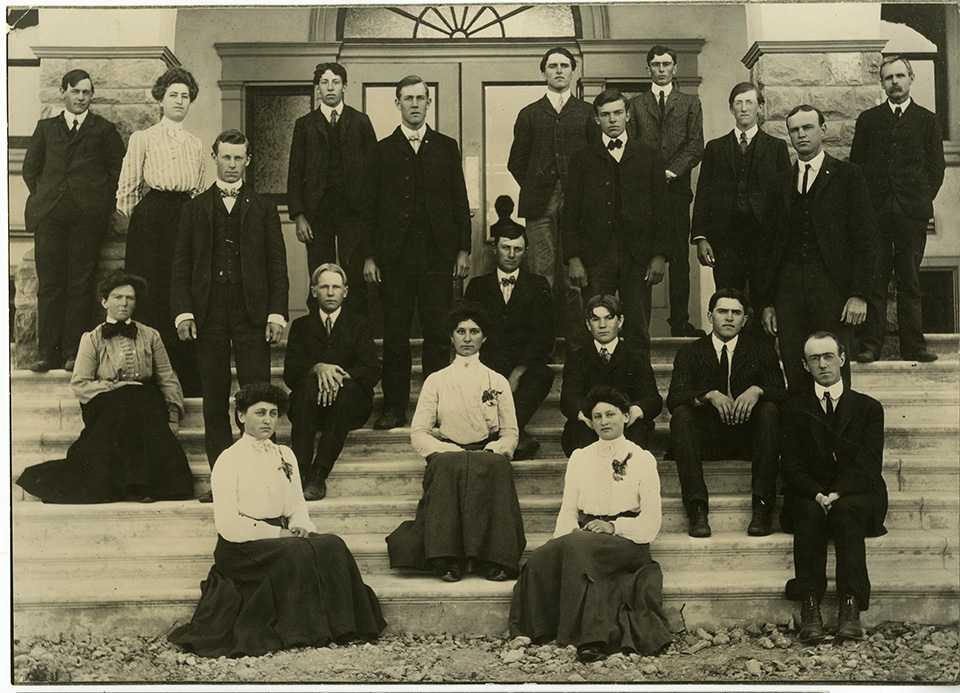Rooted in History

By Laura Sorvetti | University Archives
Pictured here may be the first class photograph of the students and instructors at Cal Poly, at the time known as the California Polytechnic School. Taken in early 1904 by local photographer Lee M. Fitzhugh, this scene shows 14 of the first students and the six instructors and staff of the school. Seated at the lower right is Cal Poly’s first director, Leroy Anderson, aged 36, who championed the Learn by Doing philosophy and taught agricultural courses. The school had opened just a few months earlier in October 1903, offering courses in agriculture, domestic science and mechanics, with instructors arriving from around the country to develop and lead the new programs. Students from across California, ranging in age from 16 to 26, enrolled in the vocational two-year program this first year, and of the students photographed here, eight would graduate.
They are seated on the steps of the Recitation and Administration Building (where Cotchett Education Building stands today). This was one of only two school buildings, the second being the men’s dormitory. No dormitory space was provided for women, who had to board in town (the Righetti family moved from Cayucos to San Luis Obispo to accommodate their daughters’ enrollment). Now, 120 years later, with an incoming class of 2027, we can reflect how far Cal Poly has come yet trace our roots from these first students.
Seated, left to right: Gwendolyn Stewart (instructor of domestic science, Matron of the Dormitory), Laura Righetti, Francis Buck, Mary Bello, Henry Pezzoni, William Boswell, Irene Righetti, Henry Wade, and Director Leroy Anderson.
Standing, left to right: Owen E. Hollister, Naomi M. Lake (stenographer, bookkeeper, and librarian), Oscar Leslie Heald (instructor of drawing, carpentry, sloyd, and iron work), Harry James, Kent Knowlton, Gus Wade, George Coonradt, Edwin Yount (instructor of carpentry), Herbert H. Cox, H. Floyd Tout and Sydney S. Twombly (instructor of agriculture, chemistry, and veterinary science).
Visit Cultivate Spring 2023 to read more stories.